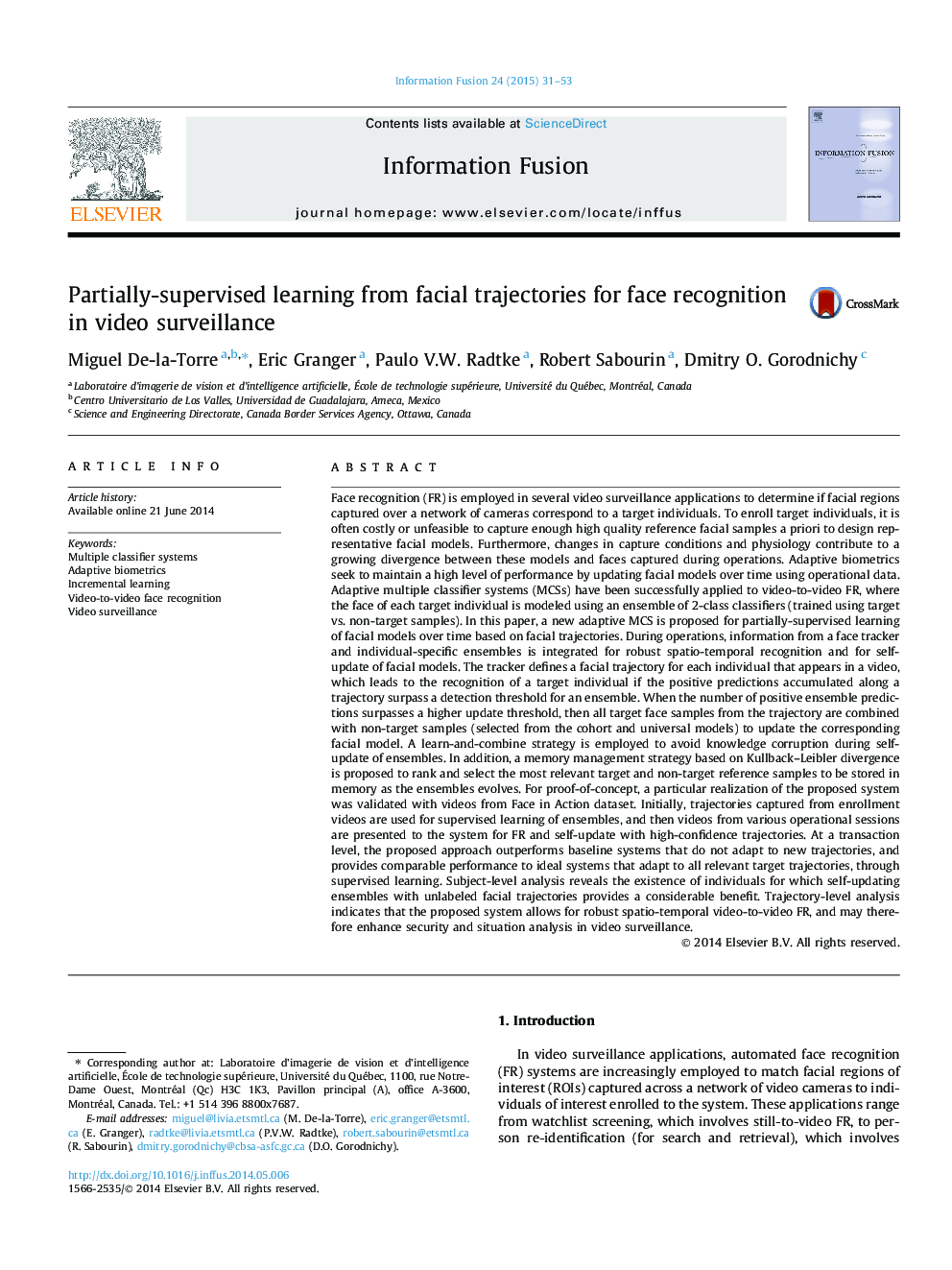| کد مقاله | کد نشریه | سال انتشار | مقاله انگلیسی | نسخه تمام متن |
|---|---|---|---|---|
| 528061 | 869499 | 2015 | 23 صفحه PDF | دانلود رایگان |
Face recognition (FR) is employed in several video surveillance applications to determine if facial regions captured over a network of cameras correspond to a target individuals. To enroll target individuals, it is often costly or unfeasible to capture enough high quality reference facial samples a priori to design representative facial models. Furthermore, changes in capture conditions and physiology contribute to a growing divergence between these models and faces captured during operations. Adaptive biometrics seek to maintain a high level of performance by updating facial models over time using operational data. Adaptive multiple classifier systems (MCSs) have been successfully applied to video-to-video FR, where the face of each target individual is modeled using an ensemble of 2-class classifiers (trained using target vs. non-target samples). In this paper, a new adaptive MCS is proposed for partially-supervised learning of facial models over time based on facial trajectories. During operations, information from a face tracker and individual-specific ensembles is integrated for robust spatio-temporal recognition and for self-update of facial models. The tracker defines a facial trajectory for each individual that appears in a video, which leads to the recognition of a target individual if the positive predictions accumulated along a trajectory surpass a detection threshold for an ensemble. When the number of positive ensemble predictions surpasses a higher update threshold, then all target face samples from the trajectory are combined with non-target samples (selected from the cohort and universal models) to update the corresponding facial model. A learn-and-combine strategy is employed to avoid knowledge corruption during self-update of ensembles. In addition, a memory management strategy based on Kullback–Leibler divergence is proposed to rank and select the most relevant target and non-target reference samples to be stored in memory as the ensembles evolves. For proof-of-concept, a particular realization of the proposed system was validated with videos from Face in Action dataset. Initially, trajectories captured from enrollment videos are used for supervised learning of ensembles, and then videos from various operational sessions are presented to the system for FR and self-update with high-confidence trajectories. At a transaction level, the proposed approach outperforms baseline systems that do not adapt to new trajectories, and provides comparable performance to ideal systems that adapt to all relevant target trajectories, through supervised learning. Subject-level analysis reveals the existence of individuals for which self-updating ensembles with unlabeled facial trajectories provides a considerable benefit. Trajectory-level analysis indicates that the proposed system allows for robust spatio-temporal video-to-video FR, and may therefore enhance security and situation analysis in video surveillance.
Journal: Information Fusion - Volume 24, July 2015, Pages 31–53
